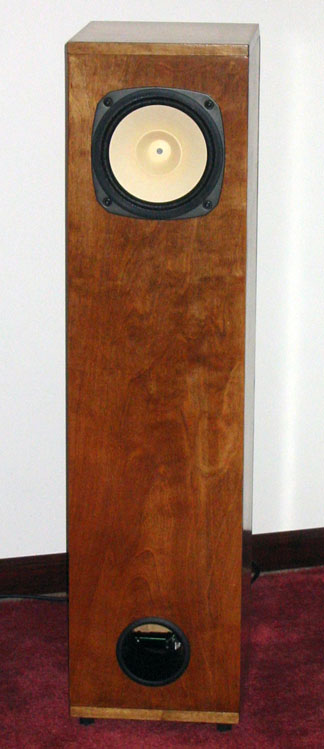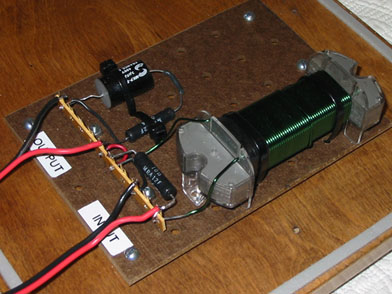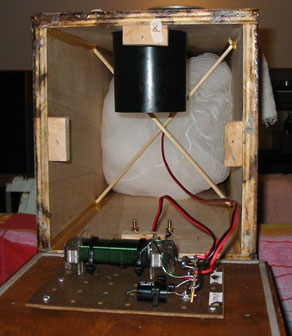
Photo Courtesy of Bob Schense

Photo Courtesy of Bob Schense
Shortly after posting my Lowther DX series ML TL project, I started to get e-mails asking about the possibility of using either a Fostex FE-206E or a FE-207E driver in the same enclosure. I ran some simulations which showed a lot of promise with a minimum number of modifications to the enclosure. I posted these simulation results on my site, with unlinked URL addresses, and directed people to them if they asked about an enclosure using one of these popular Fostex drivers. Several people have subsequently made this enclosure and some examples can be viewed in my gallery.
The frequency of questions about this enclosure design has risen steadily over the past few months. I probably get two or three inquiries a week for a ML TL design using the Fostex FE-206E or FE-207E driver. To try and answer all of these questions in one place, I have decided to add a new project detailing my recommendations for a ML TL enclosure for these Fostex drivers. I have titled this a virtual project because I have not actually built the design or heard the results. I have never seen or heard either of these drivers. However, the feedback I have received has been very positive for both drivers in this ML TL enclosure so I am comfortable adding this to my list of projects.
The ML TL enclosure design is very simple to build and a relatively compact enclosure for a transmission line. The MathCad ML TL simulations for the FE-206E and FE-207E drivers can be viewed in pdf format. One of the features I really liked about this ML TL enclosure design is that it will take either of these Fostex drivers and allow an upgrade later to one of the more expensive Lowther drivers.
The final piece in the design is the correction circuit. The correction circuit is required to get a balanced SPL response. Leaving the circuit out of the design will result in recessed bass output and an overpowering midrange response. I have included a range of parallel resistor values that can be tried when matching the speaker to the amplifier. If you are using a low damping factor tube amp, then the right resistor value is probably near the low end of the range. If you are using a high damping factor solid state amp, then the right resistor values is probably near the high end of the range. Don't be afraid to experiment with the parallel resistor value to tune the system's SPL response to your amp, room, and personal taste.
Enclosure and Correction Circuit :


Photos Courtesy of Bob Schense
Again, I have titled this a virtual project because I have not actually built the design or heard the results. Based on the number of e-mails I am receiving every week requesting advice for a project using one of these two Fostex drivers, coupled with the very positive feedback I have received about both of these drivers in this ML TL design, I am comfortable adding this to my list of projects. Hopefully one day I will have the opportunity to own one (or maybe both) of these drivers or at least be able to hear one in this ML TL design.